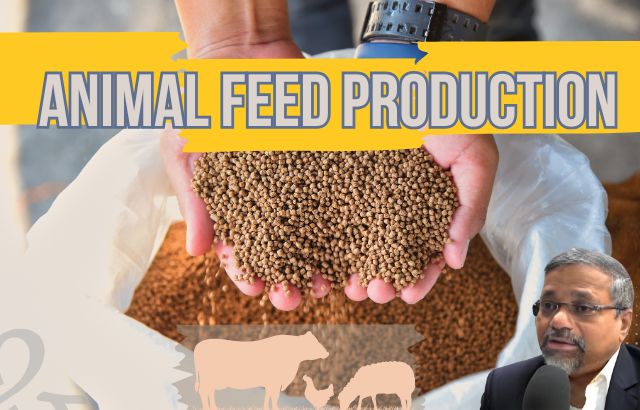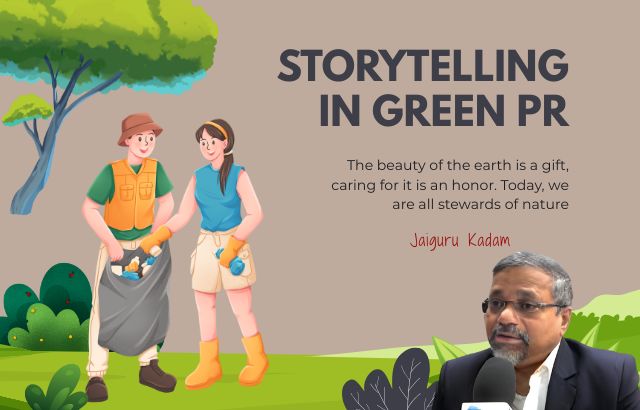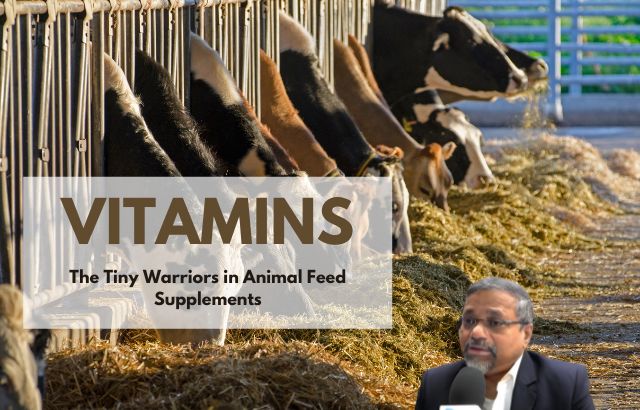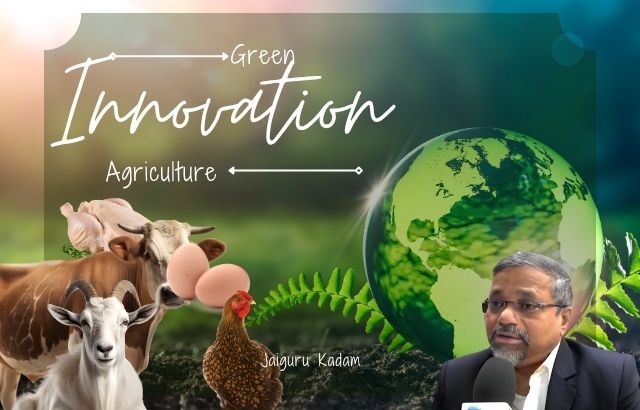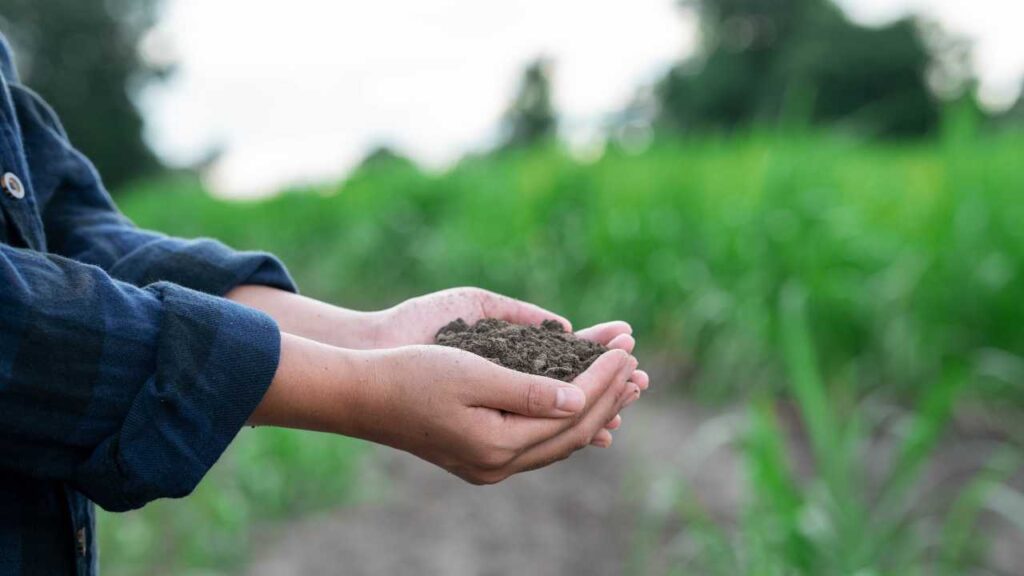Animal feed production is the backbone of India’s livestock sector, fueling the health and productivity of dairy, poultry, and aquaculture industries. As the demand for milk, eggs, and meat surges, high-quality feed—crafted from grains, legumes, vitamins, and minerals—ensures optimal animal growth and output. With India’s animal feed market projected to grow at a 6.5% CAGR from 2024 to 2030, driven by a livestock population exceeding 500 million, this industry is both lucrative and essential. This blog explores the animal feed production landscape in India, highlights innovative practices through real-world examples, showcases the contributions of Green Innovators like Jaiguru Kadam, and answers key questions through a FAQs section.
The Animal Feed Production Landscape in India
Animal feed production involves formulating nutrient-rich diets tailored to livestock needs, from dairy cows and poultry to aquaculture species. These feeds deliver essential proteins, carbohydrates, fats, vitamins, and minerals to support growth, reproduction, and productivity. In India, the industry is vital to meeting the rising demand for animal-based products, with the market valued at $10.2 billion in 2023, where poultry feed accounts for 60% of the share. However, challenges like resource scarcity, high raw material costs, and environmental concerns drive the need for sustainable innovation.
Business Model Breakdown
- Raw Materials:
- Grains (maize, wheat) and legumes (soybean) provide energy and protein.
- Vitamins and minerals enhance nutritional value.
- Additives like enzymes and probiotics improve digestion and feed efficiency.
- Manufacturing Process:
- Grinding: Pulverizing raw materials for uniform blending.
- Mixing: Combining ingredients to create balanced feed formulas.
- Pelletizing: Compressing mixtures into pellets for easy consumption and storage.
- Packaging: Sealing feed in moisture-resistant bags for distribution.
- Target Market:
- Dairy farms seeking high milk yields.
- Poultry farms needing feed for egg and meat production.
- Livestock farmers raising cattle, goats, and aquaculture species.
- Benefits:
- Continuous Demand: India’s massive livestock sector ensures steady need.
- High-Profit Margins: Fortified or organic feeds fetch premium prices.
- Government Support: Schemes like the National Livestock Mission offer subsidies, covering 20–40% of setup costs.
The Role of Green Innovators
Green Innovators are pioneers who integrate sustainability and technology into animal feed production, reducing environmental impact while meeting market demands. Their contributions include:
- Sustainable Sourcing: Using agricultural byproducts (e.g., rice bran) or insect protein to lessen reliance on resource-intensive crops like soy.
- Energy Efficiency: Employing low-energy machinery or renewable energy sources like solar for grinding and pelletizing.
- Waste Reduction: Recycling production waste into biogas or organic fertilizers for zero-waste operations.
- Farmer Education: Training farmers on optimal feed use and sustainable livestock practices to minimize environmental harm.
Insights from Jaiguru Kadam
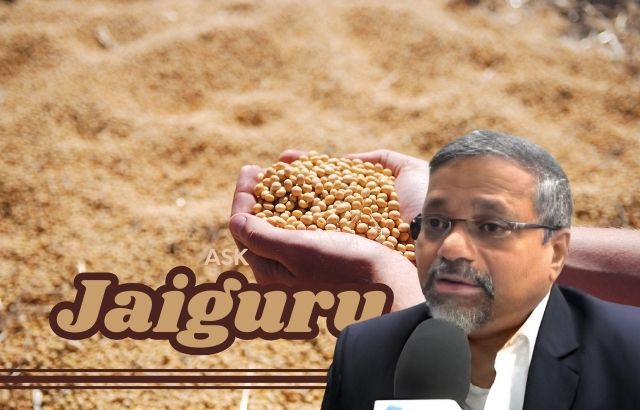
Jaiguru Kadam, a renowned Agriculture Green Innovator from India, has transformed animal feed production by developing cost-effective, eco-friendly solutions for small-scale farmers. His work emphasizes affordability and sustainability, as demonstrated by the following calculations:
Calculation 1: Cost-Benefit Analysis of a Small-Scale Feed Unit
- Setup Cost:
- Grinding machine: $2,000
- Mixer and pelletizer: $2,500
- Packaging equipment: $1,000
- Initial raw materials: $1,500
- Total: $7,000
- Annual Revenue:
- Product: Poultry feed (20,000 kg/year)
- Market price: $0.5/kg
- Revenue: 20,000 kg × $0.5 = $10,000
- Annual Operating Costs:
- Raw materials: $3,000
- Labor: $1,500
- Utilities and maintenance: $1,000
- Total: $5,500
- Net Profit: $10,000 – $5,500 = $4,500
- Break-Even Period: $7,000 ÷ $4,500 ≈ 1.56 years
Kadam’s model demonstrates that a small-scale unit can recover its investment in under two years, making it viable for rural entrepreneurs.
Calculation 2: Environmental Impact of Sustainable Feed
- Traditional Feed (Soybean-Based):
- Soybean use: 10,000 kg/year
- Water footprint: 10,000 kg × 1,800 liters/kg = 18 million liters/year
- CO2 emissions: 10,000 kg × 0.4 kg CO2/kg = 4,000 kg CO2/year
- Sustainable Feed (Insect Meal + Byproducts):
- Insect meal and byproducts: 10,000 kg/year
- Water footprint: 10,000 kg × 200 liters/kg = 2 million liters/year
- CO2 emissions: 10,000 kg × 0.1 kg CO2/kg = 1,000 kg CO2/year
- Annual Savings:
- Water: 18 million – 2 million = 16 million liters/year
- CO2: 4,000 kg – 1,000 kg = 3,000 kg CO2/year
Kadam’s sustainable approach significantly reduces resource use, aligning with India’s environmental goals.
Examples of Innovative Practices
- Protix’s Insect-Based Feed (Global, Adapted in India)
Protix uses black soldier fly larvae to produce protein-rich feed, grown on organic waste. In India, startups are adopting this model to create affordable, sustainable feed for poultry and aquaculture, reducing reliance on soy and fishmeal while cutting land use by 70%. - Cargill’s Sustainable Soy Initiative (Brazil, Relevant to India)
Cargill’s deforestation-free soy sourcing inspires Indian feed producers to adopt sustainable practices. By partnering with farmers to use certified soy, the industry reduces environmental impact and supports biodiversity. - Alltech’s Algae-Based Feed (Global, Emerging in India)
Alltech’s algae-derived omega-3 feeds enhance dairy and aquaculture nutrition. Indian researchers are exploring algae as a low-water, high-nutrient alternative to traditional crops, reducing the sector’s ecological footprint.
India’s Animal Feed Market by the Numbers: Growth, Impact & Gaps

- Market Size: India’s animal feed market was valued at $10.2 billion in 2023, with poultry feed leading at 60%.
- Productivity Boost: Quality feed increases milk yield by 15–20% in dairy cows and egg production by 10% in poultry.
- Sustainability Impact: Insect-based feeds reduce land use by 70% compared to soybean-based feeds.
- Employment: The industry employs over 1.2 million people in India, from production to distribution.
- Adoption Barrier: Only 30% of smallholder farmers use commercial feed due to cost, underscoring the need for affordable solutions.
Challenges and Future Outlook
The industry faces challenges like fluctuating raw material prices, high energy consumption, and competition. However, innovations like precision nutrition (tailoring feed using data analytics), biotechnology (e.g., nutrient-enhanced crops), and circular economy models (recycling byproducts) are shaping a sustainable future. Government support and collaboration among farmers, companies, and researchers will drive growth and eco-friendly practices.
FAQs About Animal Feed Production
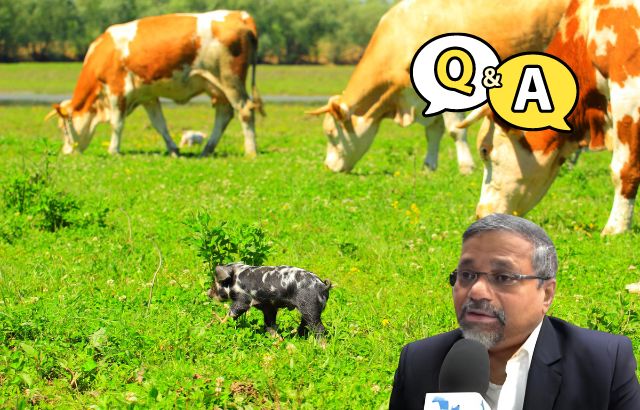
Q1: What is the initial investment for an animal feed production unit?
A: A small-scale unit costs $7,000–$12,000, while large-scale plants may require $50,000+. Government subsidies can offset 20–40% of costs.
Q2: How does quality feed improve livestock productivity?
A: Balanced feed with proteins, vitamins, and minerals boosts growth, reproduction, and yields, such as higher milk or egg output.
Q3: What are the challenges in animal feed production?
A: High raw material costs, energy use, and competition are key hurdles. Sustainable ingredients and efficient systems help address these.
Q4: Are sustainable feed options viable for small farmers?
A: Yes, using byproducts and insect meal reduces costs, and cooperative models make equipment accessible, as shown by Kadam’s work.
Q5: What types of feed are most in demand in India?
A: Poultry feed, dairy cattle feed, and aquaculture feed are top sellers, with fortified and organic feeds gaining traction.
Conclusion
Animal feed production is vital to India’s livestock sector, ensuring healthier animals and higher yields while addressing sustainability challenges. Green Innovators like Jaiguru Kadam lead the way with affordable, eco-friendly solutions, as evidenced by their cost-benefit and environmental calculations. With innovations like insect-based feeds, sustainable soy, and algae-derived nutrients, supported by government incentives, the industry is poised for growth. By embracing technology and collaboration, animal feed production can nourish livestock and secure a sustainable agricultural future for India.

